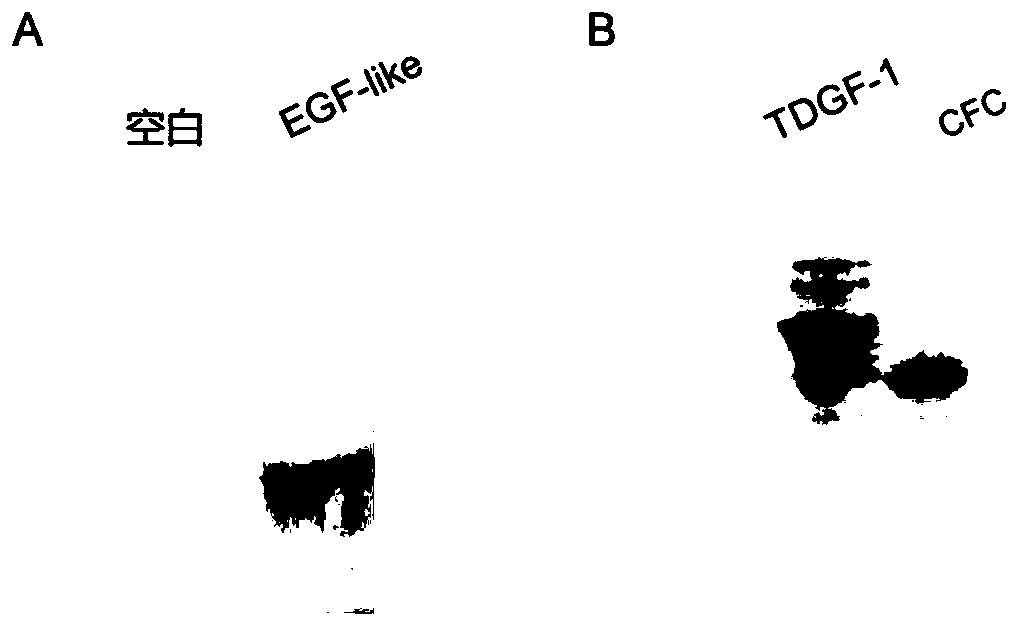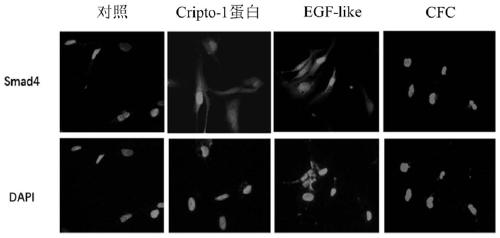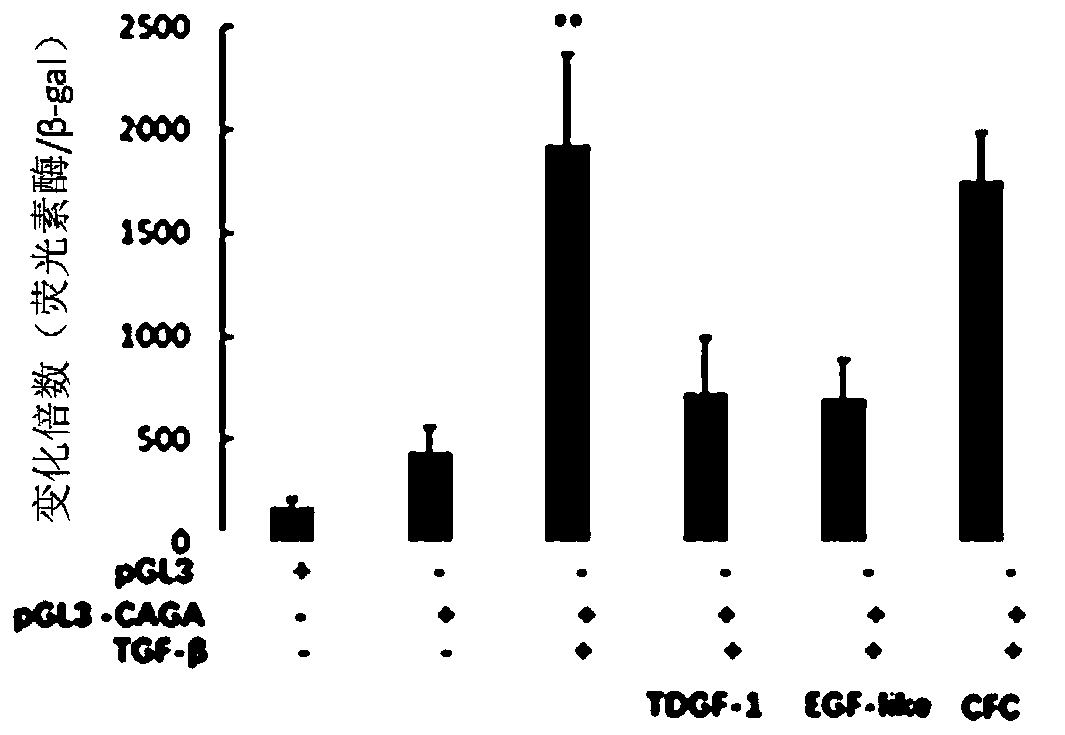Application of tdgf-1 truncated small molecule polypeptide in anti-hepatic fibrosis
A TDGF-1, anti-hepatic fibrosis technology, applied in the field of biomedicine, can solve problems such as functional limitation
- Summary
- Abstract
- Description
- Claims
- Application Information
AI Technical Summary
Problems solved by technology
Method used
Image
Examples
Embodiment 1
[0063] Embodiment 1 TDGF-1 protein and its truncated polypeptide synthesis
[0064]The full-length protein of human TDGF-1 (sequence shown in SEQ ID NO.3) was obtained by prokaryotic expression in Escherichia coli, and the TDGF-1 truncated polypeptide was synthesized in cooperation with Jikai Gene (Shanghai): EGF- Like domain short peptide (sequence shown in SEQ ID NO.1) and CFC domain short peptide (sequence shown in SEQ ID NO.2).
[0065] SEQ ID NO. 1: PPMGIQHSKELNRTCCLNGGTCML;
[0066] SEQ ID NO. 2: PSFYGRNCEHDVRKENCGSVPHDTWLPKKCSLCK.
[0067] SEQ ID NO.3:
[0068] MDCRKMARFSYSVIWIMAISKVFELGLVAGLGHQEFARPSRGYLAFRDDSIWPQEEPAIRPRSSQRVPPMGIQHSKELNRTCCLNGGTCMLGSFCACPPSFYGRNCEHDVRKENCGSVPHDTWLPKKCSLCKCWHGQLRCFPQAFLPGCDGLVMDEHLVASRTPELPPSARTTTFMLVGICLSIQSYY
[0069] Protein and peptide electrophoresis figure 1 shown.
Embodiment 2
[0070] Example 2 In vitro cell experiments to study the function of TDGF-1 protein and its truncated polypeptide
[0071] 1. Immunofluorescence experiment
[0072] Method: Divide 1×10 5 LX2 (human hepatic stellate cell line) cells were planted in a 6-well plate at 37°C, 5% CO 2 Cultivate in a sterile environment for 24 hours until completely adhered to the wall, remove the culture supernatant, replace with DMEM medium containing 3% fetal bovine serum to continue the culture, add PBS and 50ng Cripto-1 whole protein to different cell supernatants (R&D Company), 50ng EGF-like domain short peptide, 50ng CFC domain short peptide, incubated for 48 hours. Remove the supernatant, wash the cells three times with PBS, add pre-cooled 4% paraformaldehyde to each well to fix for 5 minutes, wash with PBS three times, add PBS containing 0.5% TritonX-100, 1ml per well, incubate at room temperature for 10 minutes; Aspirate 0.5% TritonX-100 PBS, add 1ml 5% BSA (diluted in PBS) to each well, ...
Embodiment 3
[0085] Example 3 In vivo experiments to study the function of TDGF-1 protein and its truncated polypeptide
[0086] 1. Construction of mouse model of liver fibrosis
[0087] Healthy C57 male mice, weighing between 18-22g, were adaptively fed for 3-5 days. Create a mouse model of liver fibrosis by subcutaneous injection of carbon tetrachloride or intraperitoneal injection (15 μl carbon tetrachloride / 85 μl olive oil), inject twice a week, the total volume of each injection is 100 μl, and sacrifice after continuous injection for 8 weeks From mice, the liver and peripheral blood were collected for the analysis of liver fibrosis evaluation indicators (source of model establishment scheme: J Hepatol.2017Oct; 67(4):770-779).
[0088] 2. Detection
[0089] From the 4th week of liver fibrosis mouse modeling, different time points (4-10 weeks) were used to intervene with small molecules of TDGF-1 truncated polypeptide to mice with liver fibrosis, intraperitoneally injected (10ng / g bod...
PUM
 Login to View More
Login to View More Abstract
Description
Claims
Application Information
 Login to View More
Login to View More - R&D
- Intellectual Property
- Life Sciences
- Materials
- Tech Scout
- Unparalleled Data Quality
- Higher Quality Content
- 60% Fewer Hallucinations
Browse by: Latest US Patents, China's latest patents, Technical Efficacy Thesaurus, Application Domain, Technology Topic, Popular Technical Reports.
© 2025 PatSnap. All rights reserved.Legal|Privacy policy|Modern Slavery Act Transparency Statement|Sitemap|About US| Contact US: help@patsnap.com



